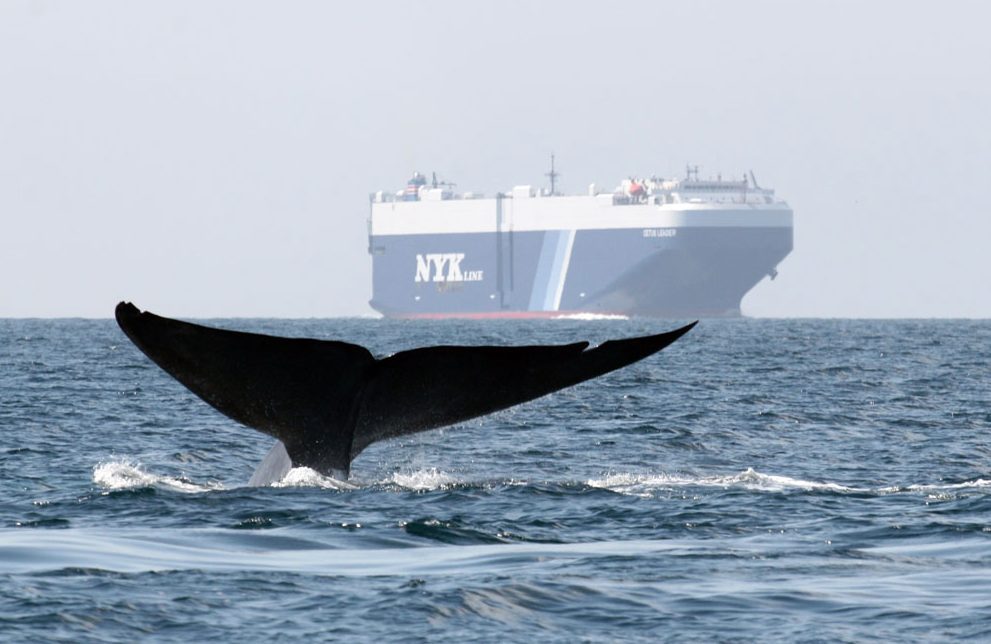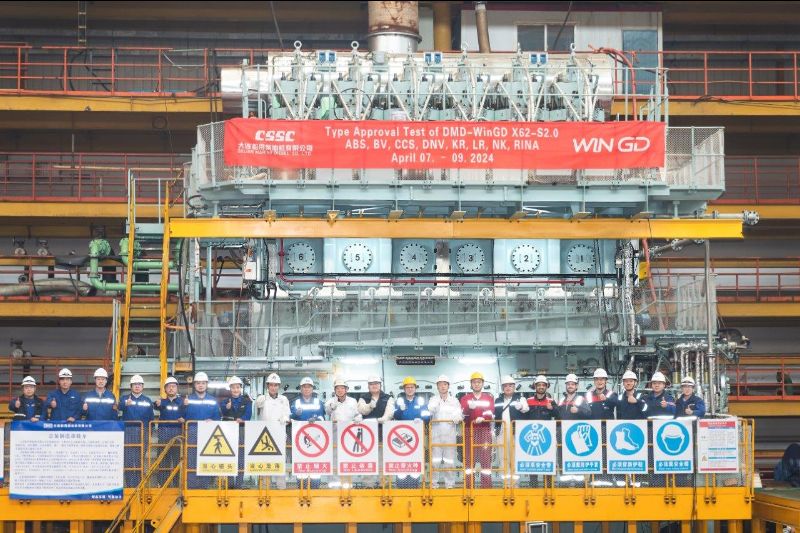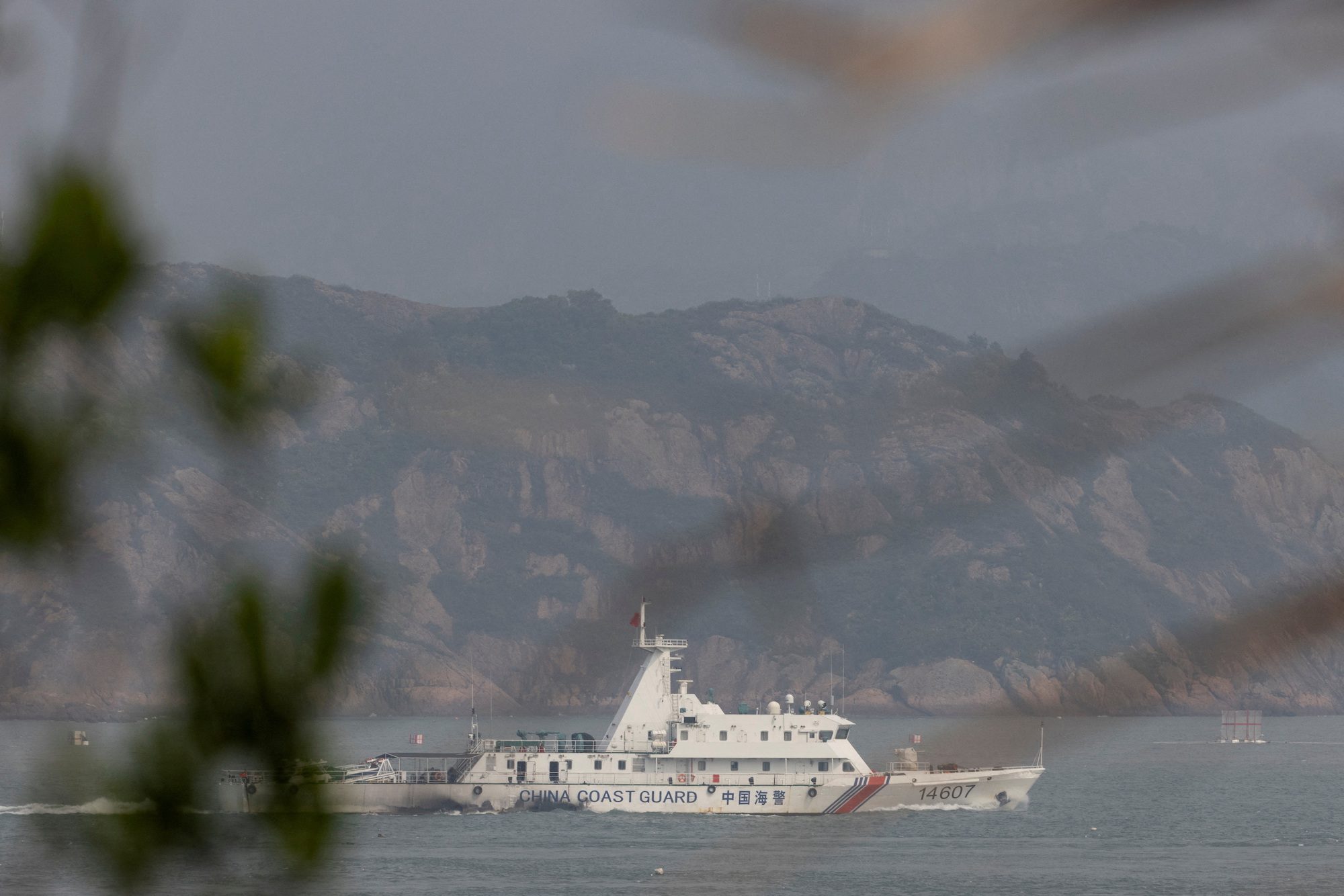
Cloudy With a Chance of Whales
A whale passes within sight of a ship. Photo by John Calambokidis, Cascadia Research
New technology will enable scientists to forecast patterns of whale traffic in the Pacific, which will help ships steer clear of whales and reduce fatal ship strikes.
The waters off the coast of California are heavily trafficked, not only by ships, but also by those other seagoing behemoths, the great whales. Blue, fin, humpback and gray whales all migrate up and down the West Coast. When whales and ships come into contact, however, the results can be fatal. Ship strikes are a significant cause of mortality for these species, all of which, other than the gray whale, are currently listed as endangered.
If ships knew when whales were in the area then they could steer clear or temporarily slow down. But whales spend most of their time hidden beneath the waves. By the time a ship’s captain spots a whale, it’s often already too late. But a team of scientists from NOAA, Oregon State University, and the University of Maryland Center for Environmental Science are working on a solution.

It’s called WhaleWatch, and it’s the result of decades of work. Bruce Mate of OSU has been tracking whales using satellite tags for more than twenty years. All the while, ocean observing satellites have been recording physical conditions on the ocean. By overlaying the tracking data atop maps showing ocean conditions, the researchers are deciphering the combination of conditions most likely to attract whales. Hopefully, they will soon be able to issue whale advisories based on data as it streams in from the satellites.
What they’re really predicting isn’t the presence of whales themselves, but of dense masses of krill—the tiny, shrimp-like creatures that are a preferred food for many filter feeding whales. Krill are widespread in the ocean, but they only coalesce into dense formations where currents converge and where temperature and other conditions are all just right. For whales, it’s only worth going after krill when they’re in these dense masses, so they can get millions of them in a mouthful. If you know where these krill are, you also know where the whales are likely to be.
The problem is, satellites aren’t able to detect the presence of animals like krill or whales directly. But they are very good at sensing the physical condition of the ocean. Wind speed and direction, temperature gradients, upwellings, eddies, and fronts are all visible to satellites.
The WhaleWatch scientists are using computer models to observe how these underwater and atmospheric systems collide and interact. They’re basically predicting the weather, but beneath the waves instead of above them.
And then, they’re taking it one step further. Daniel Palacios, an oceanographer with NOAA’s Southwest Fisheries Science Center, explained. “We’re making the leap,” Palacios said, “from observing physical processes in the ocean to predicting the biological processes that happen as a result.”
From an economic perspective, the ability to forecast whale activity is icing on a cake. “The satellites are already up there producing data,” Palacios said. “We’re just coming up with creative ways to extract useful products from that data.”
The WhaleWatch program is currently in the proof-of-concept phase, with scientists still working out their statistical techniques. They hope to be making regular forecasts in about 18 months. The lead investigator is Helen Bailey at the University of Maryland Center for Environmental Science.
Ninety-percent of the world’s trade is carried by ship, and that number is projected to grow rapidly in coming years. Hopefully, WhaleWatch and similar programs elsewhere will mean that ship strikes will decrease even as shipping traffic grows.
This article originally appeared on the NOAA Fisheries website.

Subscribe for Daily Maritime Insights
Sign up for gCaptain’s newsletter and never miss an update
— trusted by our 109,199 members

Get The Industry’s Go-To News
Subscribe to gCaptain Daily and stay informed with the latest global maritime and offshore news

 Join The Club
Join The Club








